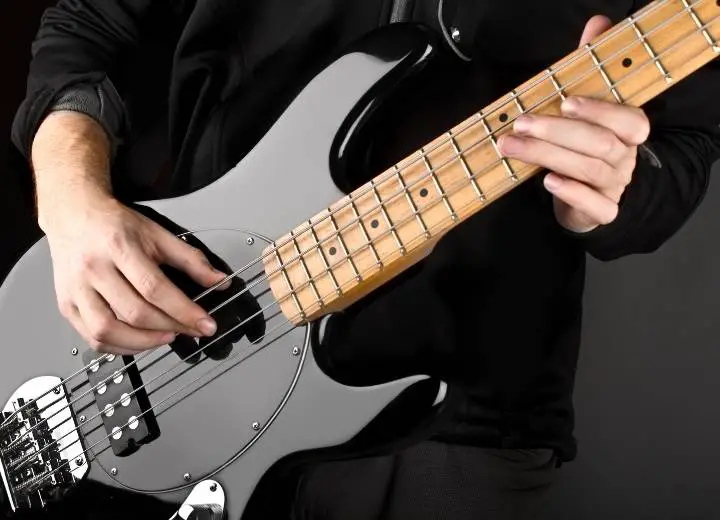
When it comes to recording the bass sound, the topic of mono or stereo is a hot debate. Almost all artists would suggest you keep all low frequencies, including the bass in mono.
However, in certain cases, you absolutely can do it with stereo recording. Stay tuned and find out the answer in this article!
What is a mono and stereo recording?
#1. Mono recording
Mono is a short form of monophonic which means a sound. In other words, monophonic is a compound word of mono and phonic.
Monophonic is all of the sounds – in most situations, which are recorded and then played back by using only one audio channel.
For instance, one mic used to record a guitar is considered a mono recording as you only use one channel (with one microphone) to capture the sounds of guitars.
Even though you want to capture many instruments, but use one mic, it is ultimately a mono recording, since the sound is recorded and played back by only one channel.
You just need to remember that a mono recording is a process of capturing and playing back tracks through only one audio channel, regardless of multiple sounds and instruments.
#2. Stereo recording
Stereo is a short form of stereophonic, which means a full sound. In other words, stereophonic is a compound word of stereo and phonic.
Stereo is all of the sounds recorded with two or more microphones and then played back by using two audio channels.
Every single of our listening devices are set up in stereo; including smartphones, laptop speakers, earphones, or sounds in movies, in video games, in public address systems in clubs and proms and so on.
All of the sound systems in every consumer electronic and social media are accompanied by two audio channels and are therefore set up with stereo.
There are two types when it comes to stereo, namely True Stereo and Pseudo Stereo.
You call it True stereo when sound sources such as multiple instruments are recorded through two mics.
In contrast, Pseudo stereo is played back through two audio channels but is not captured in True stereo. For instance, if you record a sound through a mic, the sound will be in mono but played back in stereo, since all of the sound systems plays by using two audio channels.
#3. Mono vs. stereo
Stereo tracks need two or more audio channels in order to capture a sound and then play back the tracks.
Unlike stereo, a mono track only needs one audio channel for both recording and playing back. Still, the output sound is significantly different for most audiences.
Recording bass sounds in mono or stereo
#1. Bass in a mono recording
Which frequencies should you record in mono?
Based on the genre of music you tend to write, the key you will write in as well as the loudness of the instruments (and other factors), various frequencies can be adapted.
With a common rule of thumb, it makes mention of common practices in order to sum any sound below 200 Hz to mono. In other words, most of the bass, sub-bass, or kick drum is always summed to monophonic.
Keep in mind that a couple of bass instruments do not have only bass frequencies and can contain mid to high ends. In that situation, you just need to set lower frequencies in a mono recording, and not the whole instruments or sounds.
Why should you capture bass in mono?
As our ears cannot figure out the direction of bass sounds, stereo imaging creates more harm for the health of these ears. It is particularly true in live concerts since almost all bands either play music in mono, or they would mix the low ends for mono.
If the bass is not appropriately summed into mono, and then the low ends are converted from double stereo images to mono, it can lead to phase cancellations as well as losing weight, power, and even the whole signal.
That is absolutely something that you do not want to happen when your audios are played in clubs or concerts.
#2. Bass in stereo recording
The bass sound itself can be summed in stereo. If you need to cut to vinyl records, it can be worth examining how the tracks sound with a high pass filter at approximately 200 hz though.
If you want to remain digital, wide bass sounds are not a problem, but assure it will not turn too cluttered. The bass needs to be followed by the vocal and if there are too many things then it is likely to become unfocused.
The bottom line
Hopefully the piece of writing would be a significant assistance for you to make a right decision on recording the bass in mono or stereo.
Whichever you select, to be sure to have fun. Just bear in mind that there are no rules of conduct to produce music.
